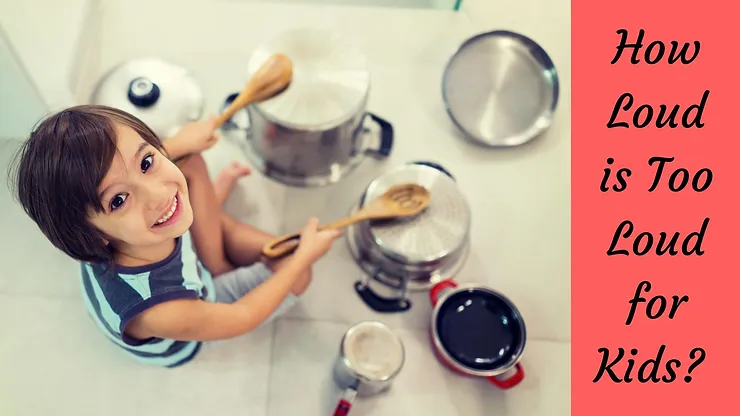
We are constantly absorbing varying levels of sound as we navigate different environments regularly. This is especially heightened in the digital era we live in where electronic devices have been integrated in daily life. The Hearing Health Foundation estimates that nearly 50% of people, ages 12-35, could be exposed to unsafe noise from personal listening devices. Earbuds and headphones are one example of the ways in which kids and young adults can experience an increased risk of developing hearing loss.
Hearing loss is one of the most common chronic conditions that people experience. It is important to be aware that people of all ages can experience hearing loss, including kids. Prioritizing hearing health and practicing safe listening measures can drastically reduce this risk and enhance overall health!
How Loud is Too Loud?
Sound is measured in units referred to as decibels (dB) which capture the intensity of sound waves. Sound above 85dB is considered potentially harmful for hearing health which is the equivalent of busy city traffic:
-
0dB: silence
-
30dB: whispering
-
60dB: normal conversation
-
80dB: blender, vacuum cleaner
-
100dB: motorcycle, earbuds on the highest setting
-
120dB: airplane takeoff
-
130dB: concert
According to the Occupational Health and Safety Administration (OHSA), people can be exposed to noise at 85dB for a maximum of 8 hours per day without significant risk to hearing. But safe exposure to noise above 85dB should be cut in half for every 3 decibels increase:
-
85dB: 8 hours
-
88dB: 4 hours
-
91dB: 2 hours
-
94dB: 30min
One time or consistent exposure to loud noise that exceeds safety time frames can cause hearing loss.
Noise Induced Hearing Loss
Exposure to loud noise is one of the most common causes of hearing loss. Absorption of loud noise can damage the inner ear. There are thousands of hair cells in the inner ear which are responsible for translating soundwaves into electrical signals that are then sent to the brain through auditory pathways. They are then able to be further processed and the brain assigns meaning to the incoming sound information, allowing us to understand what we hear.
Hair cells in the inner ear require rest from being exposed to noise and constantly working to convert soundwaves. Overactivity can cause these hair cells to lose sensitivity and/or die, which is permanent. Unlike other types of cells, hair cells in the inner ear do not regenerate. Humans are born with all the hair cells – thousands in each ear – that we will ever have. This means that injury and damage leads to hearing loss.
Tips to Protect Hearing Health
There are several ways you can protect hearing health including the following:
-
Wear protective gear: there are several types of protective wear that serve as a barrier and reduce the amount and impact of sound. This includes ear plugs, earmuffs, and headphones.
-
Maintain Low Volume: it is important to be aware of the volume of sound that kids are exposed to. To help with this, you can download an app that measures decibels. Be sure to maintain a low volume on electronic devices. If people need to raise their voice, it’s a good indication that the sound is too loud!
-
Take Listening Breaks: the ears need time to rest and recover from processing sound. A good way to facilitate this is by taking listening breaks throughout the day where you eliminate (or reduce) sound by turning off the tv, music etc.
-
Noise Cancellation Headphones: noise cancellation technology is designed to reduce background noise which prevents people from having to increase the volume on electronic devices in noisier settings. This is especially useful for people who use earbuds regularly.
-
Reduce Exposure: when possible, avoid loud environments or the frequency of engaging in loud activities. This can include taking different routes to avoid traffic or construction sites, choosing quieter restaurants, avoiding peak times etc.
-
Assess Hearing: integrate hearing tests in yearly health screenings. Hearing tests involve a noninvasive process that measure hearing ability in both ears which identifies any impairment. This is a good practice which allows people to identify changes to hearing health and intervene early!
Just as it is important for kids to listen at safe volumes, it is important for the adults in their lives to practice healthy hearing habits. To monitor your hearing abilities with a hearing test and to learn more about safe listening practices, contact us today!
